IEEE Std 1474.1™-2004
(Revision of
IEEE Std 1474.1-1999)
IEEE Standard for Communications-
Based Train Control (CBTC)
Performance and Functional
Requirements
IEEE Vehicular Technology Society
Sponsored by the
Rail Transit Vehicle Interface Standards Committee
s
s 1474.1TM
d
d
r
r
a
a
d
d
n
n
a
a
t
t
S
S
E
E
E
E
E
E
I
I
3 Park Avenue, New York, NY 10016-5997, USA
25 February 2005
Print: SH95275
PDF: SS95275
Authorized licensed use limited to: NORTHERN JIAOTONG UNIVERSITY. Downloaded on October 21,2010 at 09:03:37 UTC from IEEE Xplore. Restrictions apply.
�
Authorized licensed use limited to: NORTHERN JIAOTONG UNIVERSITY. Downloaded on October 21,2010 at 09:03:37 UTC from IEEE Xplore. Restrictions apply.
�
Recognized as an
American National Standard (ANSI)
IEEE Std 1474.1™-2004(R2009)
(Revision of
IEEE Std 1474.1-1999)
IEEE Standard for Communications-
Based Train Control (CBTC)
Performance and Functional
Requirements
Sponsor
Rail Transit Vehicle Interface Standards Committee
of the
IEEE Vehicular Technology Society
Approved 1 February 2005
American National Standards Institute
Reaffirmed 11 September 2009
Approved 23 September 2004
IEEE-SA Standards Board
Authorized licensed use limited to: NORTHERN JIAOTONG UNIVERSITY. Downloaded on October 21,2010 at 09:03:37 UTC from IEEE Xplore. Restrictions apply.
�
Abstract:
Performance and functional requirements for a communications-based train control
(CBTC) system are established in this standard. A CBTC system is a continuous, automatic train
control system utilizing high-resolution train location determination, independent of track circuits;
continuous, high-capacity, bidirectional train-to-wayside data communications; and train-borne and
wayside processors capable of implementing automatic train protection (ATP) functions, as well as
optional automatic train operation (ATO) and automatic train supervision (ATS) functions. In
addition to CBTC functional requirements, this standard also defines headway criteria, system
safety criteria, and system availability criteria for a CBTC system. This standard is applicable to the
full range of transit applications including automated people movers.
Keywords:
automation, communications, signaling, train control
The Institute of Electrical and Electronics Engineers, Inc.
3 Park Avenue, New York, NY 10016-5997, USA
Copyright © 2005 by the Institute of Electrical and Electronics Engineers, Inc.
All rights reserved. Published 25 February 2005. Printed in the United States of America.
IEEE is a registered trademark in the U.S. Patent & Trademark Office, owned by the Institute of Electrical and Electronics
Engineers, Incorporated.
Print:
PDF:
ISBN 0-7381-4486-X SH95275
ISBN 0-7381-4487-8 SS95275
No part of this publication may be reproduced in any form, in an electronic retrieval system or otherwise, without the prior
written permission of the publisher.
Authorized licensed use limited to: NORTHERN JIAOTONG UNIVERSITY. Downloaded on October 21,2010 at 09:03:37 UTC from IEEE Xplore. Restrictions apply.
�
IEEE Standards documents are developed within the IEEE Societies and the Standards Coordinating Committees of the
IEEE Standards Association (IEEE-SA) Standards Board. The IEEE develops its standards through a consensus
development process, approved by the American National Standards Institute, which brings together volunteers
representing varied viewpoints and interests to achieve the final product. Volunteers are not necessarily members of the
Institute and serve without compensation. While the IEEE administers the process and establishes rules to promote fairness
in the consensus development process, the IEEE does not independently evaluate, test, or verify the accuracy of any of the
information or the soundness of any judgments contained in its standards.
Use of an IEEE Standard is wholly voluntary. The IEEE disclaims liability for any personal injury, property or other
damage, of any nature whatsoever, whether special, indirect, consequential, or compensatory, directly or indirectly resulting
from the publication, use of, or reliance upon this, or any other IEEE Standard document.
The IEEE does not warrant or represent the accuracy or content of the material contained herein, and expressly disclaims
any express or implied warranty, including any implied warranty of merchantability or fitness for a specific purpose, or that
the use of the material contained herein is free from patent infringement. IEEE Standards documents are supplied “AS IS.”
The existence of an IEEE Standard does not imply that there are no other ways to produce, test, measure, purchase, market,
or provide other goods and services related to the scope of the IEEE Standard. Furthermore, the viewpoint expressed at the
time a standard is approved and issued is subject to change brought about through developments in the state of the art and
comments received from users of the standard. Every IEEE Standard is subjected to review at least every five years for
revision or reaffirmation, or every ten years for stabilization. When a document is more than five years old and has not been
reaffirmed, or more than ten years old and has not been stabilized, it is reasonable to conclude that its contents, although still
of some value, do not wholly reflect the present state of the art. Users are cautioned to check to determine that they have the
latest edition of any IEEE Standard.
In publishing and making this document available, the IEEE is not suggesting or rendering professional or other services
for, or on behalf of, any person or entity. Nor is the IEEE undertaking to perform any duty owed by any other person or
entity to another. Any person utilizing this, and any other IEEE Standards document, should rely upon the advice of a
competent professional in determining the exercise of reasonable care in any given circumstances.
Interpretations: Occasionally questions may arise regarding the meaning of portions of standards as they relate to specific
applications. When the need for interpretations is brought to the attention of IEEE, the Institute will initiate action to prepare
appropriate responses. Since IEEE Standards represent a consensus of concerned interests, it is important to ensure that any
interpretation has also received the concurrence of a balance of interests. For this reason, IEEE and the members of its
societies and Standards Coordinating Committees are not able to provide an instant response to interpretation requests except
in those cases where the matter has previously received formal consideration. A statement, written or oral, that is not
processed in accordance with the IEEE-SA Standards Board Operations Manual shall not be considered the official position
of IEEE or any of its committees and shall not be considered to be, nor be relied upon as, a formal interpretation of the IEEE.
At lectures, symposia, seminars, or educational courses, an individual presenting information on IEEE standards shall make
it clear that his or her views should be considered the personal views of that individual rather than the formal position,
explanation, or interpretation of the IEEE.
Comments for revision of IEEE Standards are welcome from any interested party, regardless of membership affiliation with
IEEE. Suggestions for changes in documents should be in the form of a proposed change of text, together with appropriate
supporting comments. Recommendations to change the status of a stabilized standard should include a rationale as to why a
revision or withdrawal is required. Comments and recommendations on standards, and requests for interpretations should be
addressed to:
Secretary, IEEE-SA Standards Board
445 Hoes Lane
Piscataway, NJ 08854
USA
Authorization to photocopy portions of any individual standard for internal or personal use is granted by the Institute of
Electrical and Electronics Engineers, Inc., provided that the appropriate fee is paid to Copyright Clearance Center. To
arrange for payment of licensing fee, please contact Copyright Clearance Center, Customer Service, 222 Rosewood Drive,
Danvers, MA 01923 USA; +1 978 750 8400. Permission to photocopy portions of any individual standard for educational
classroom use can also be obtained through the Copyright Clearance Center.
Copyright © 2009 IEEE. All rights reserved.
This is an unapproved IEEE Standards draft, subject to change.
iii
Authorized licensed use limited to: NORTHERN JIAOTONG UNIVERSITY. Downloaded on October 21,2010 at 09:03:37 UTC from IEEE Xplore. Restrictions apply.
�
Introduction
[This introduction is not part of IEEE Std 1474.1-2004, IEEE Standard for Communications-Based Train Control
(CBTC) Performance and Functional Requirements.]
This introduction provides some background on the rationale used to develop this standard. This information
is meant to aid in the understanding, usage, and applicability of this standard.
Conventional signaling/train control systems rely almost exclusively on track circuits to detect the presence
of trains. Information on the status of the track ahead is provided to train operators either through wayside
signals or train-borne cab signals. Ensuring compliance with the signals is achieved through operating
procedures, wayside automatic train stops, or train-borne supervisory equipment linked to the train’s braking
system. These conventional systems are effective in providing train protection, but are not particularly
efficient in maximizing the utilization of the rail transit infrastructure, as a result of a number of fundamental
limitations, specifically, the following:
a)
b)
c)
The location of trains can only be determined to the resolution of the track circuits; if any part of a
track circuit is occupied by a train, the whole track circuit must be assumed to be occupied by the
train. Track circuits can be made shorter, but each additional track circuit requires additional way-
side hardware, so there is an economical and practical limit to the number of track circuits that can
be provided.
The information that can be provided to a train is limited to a small number of wayside signal
aspects or a small number of speed codes in a cab signal system.
For a wayside signal system with automatic train stops but without continuous cab signaling,
enforcement is intermittent.
CBTC systems overcome these fundamental limitations of conventional track circuit-based systems, and
therefore, permit more effective utilization of the transit infrastructure. This is accomplished, for example,
by allowing trains to operate safely at much closer headways, by permitting greater flexibility and greater
precision in train control, and by providing continuous safe train separation assurance and overspeed protec-
tion. Additional benefits of CBTC technology include the economical support of automatic train operations
(both on the mainline and in maintenance yards), improved reliability, and reductions in maintenance costs
through a reduction in wayside equipment and real-time diagnostic information. The basic characteristics of
a CBTC system include the following:
1) Determination of train location, to a high degree of precision, independent of track circuits.
2) A geographically continuous train-to-wayside and wayside-to-train data communications network to
permit the transfer of significantly more control and status information than is possible with conven-
tional systems.
3) Wayside and train-borne vital processors to process the train status and control data and provide
continuous automatic train protection (ATP). Automatic train operation (ATO) and automatic train
supervision (ATS) functions can also be provided, as required by the particular application.
Although the benefits of CBTC technology are recognized, there are currently no independent standards
defining the performance and functional requirements that need to be satisfied by CBTC systems in order to
realize enhanced performance, availability, train operational flexibility, and train protection. This standard
has been developed to address this.
iv
Copyright © 2005 IEEE. All rights reserved.
Authorized licensed use limited to: NORTHERN JIAOTONG UNIVERSITY. Downloaded on October 21,2010 at 09:03:37 UTC from IEEE Xplore. Restrictions apply.
�
Notice to users
Errata
Errata, if any, for this and all other standards can be accessed at the following URL: http://
standards.ieee.org/reading/ieee/updates/errata/index.html. Users are encouraged to check this URL for
errata periodically.
Interpretations
Current interpretations can be accessed at the following URL: http://standards.ieee.org/reading/ieee/interp/
index.html.
Patents
Attention is called to the possibility that implementation of this standard may require use of subject matter
covered by patent rights. By publication of this standard, no position is taken with respect to the existence or
validity of any patent rights in connection therewith. The IEEE shall not be responsible for identifying
patents or patent applications for which a license may be required to implement an IEEE standard or for
conducting inquiries into the legal validity or scope of those patents that are brought to its attention.
Participants
At the time this standard was completed, the Communications-Based Train Control Working Group had the
following membership:
George Achakji
Stephane Bois
Corinne Braban
Frederick Childs
Michael Crispo
Nicolas Estivals
Harold Gillen
Harvey Glickenstein
Vic Graponne
Alan F. Rumsey,
Chair
James Hoelsher
Geoff Hubbs
Kenneth A. Karg
John LaForce
Martin Lukes
Dave Male
Charles Martin
Norman. May
Bob Miller
William Petit
Venkat Pindiprolu
Carl Schwellnus
Mickey Senase
Errol Taylor
John Vogler
Ken Vought
Robert E. Walsh
David Zahorsky
The following members of the individual balloting committee voted on this standard. Balloters may have
voted for approval, disapproval, or abstention.
Corinne Braban
Frederick Childs
Michael Crispo
David Dimmer
Jeff Eilenberg
Nicolas Estivals
Harvey Glickenstein
James Hoelsher
Geoff Hubbs
Kenneth A. Karg
John LaForce
Martin Lukes
Charles Martin
Norman May
Tom McGean
William Petit
Venkat Pindiprolu
Alan F. Rumsey
Louis Sanders
Jeffrey Smith
John Vogler
Robert E. Walsh
Copyright © 2005 IEEE. All rights reserved.
v
Authorized licensed use limited to: NORTHERN JIAOTONG UNIVERSITY. Downloaded on October 21,2010 at 09:03:37 UTC from IEEE Xplore. Restrictions apply.
�
When the IEEE-SA Standards Board approved this standard on 23 September 2004, it had the following
membership:
Don Wright,
Steve M. Mills,
Judith Gorman,
Chair
Vice Chair
Secretary
Mark S. Halpin
Raymond Hapeman
Richard J. Holleman
Richard H. Hulett
Lowell G. Johnson
Joseph L. Koepfinger*
Hermann Koch
Thomas J. McGean
Daleep C. Mohla
Paul Nikolich
T. W. Olsen
Ronald C. Petersen
Gary S. Robinson
Frank Stone
Malcolm V. Thaden
Doug Topping
Joe D. Watson
Chuck Adams
Stephen Berger
Mark D. Bowman
Joseph A. Bruder
Bob Davis
Roberto de Marca Boisson
Julian Forster*
Arnold M. Greenspan
*Member Emeritus
Also included are the following nonvoting IEEE-SA Standards Board liaisons:
Satish K. Aggarwal,
Richard DeBlasio,
NRC Representative
DOE Representative
Alan Cookson,
NIST Representative
Don Messina
IEEE Standards Project Editor
vi
Copyright © 2005 IEEE. All rights reserved.
Authorized licensed use limited to: NORTHERN JIAOTONG UNIVERSITY. Downloaded on October 21,2010 at 09:03:37 UTC from IEEE Xplore. Restrictions apply.
�


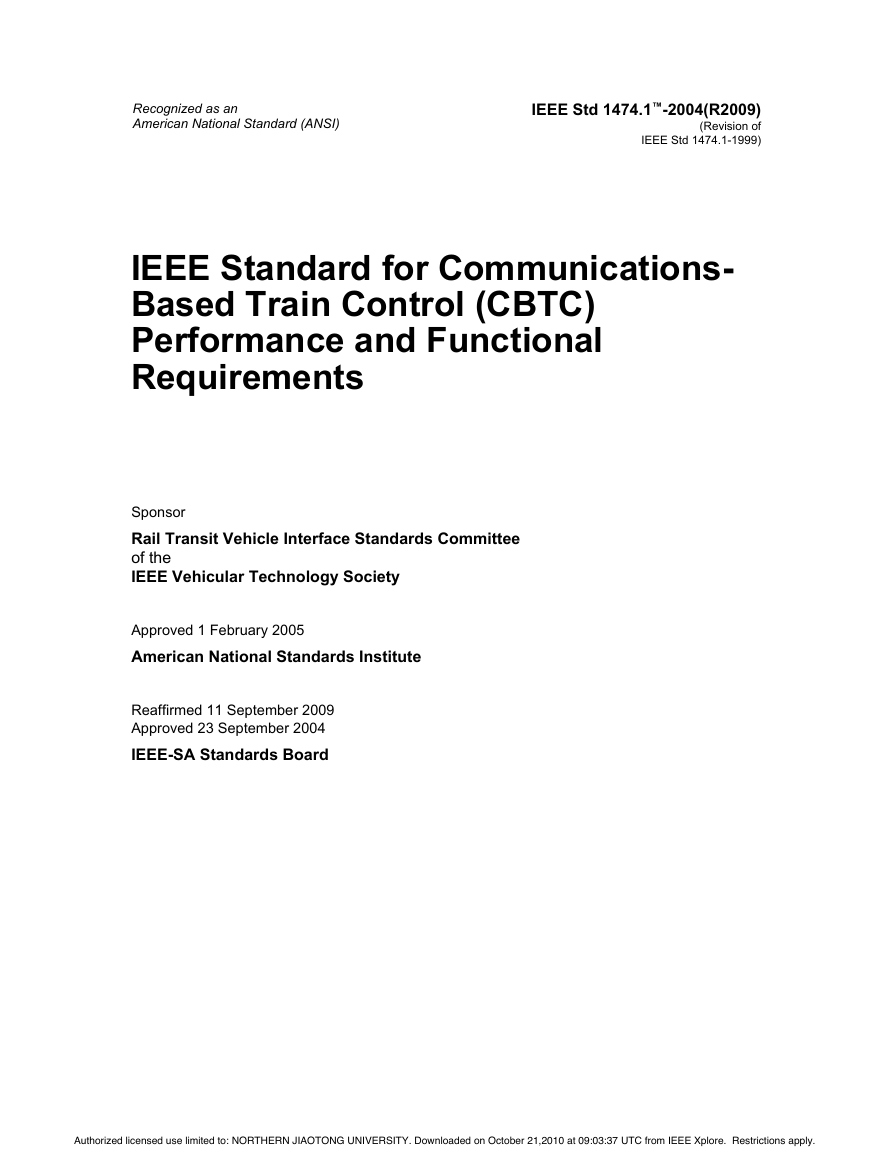
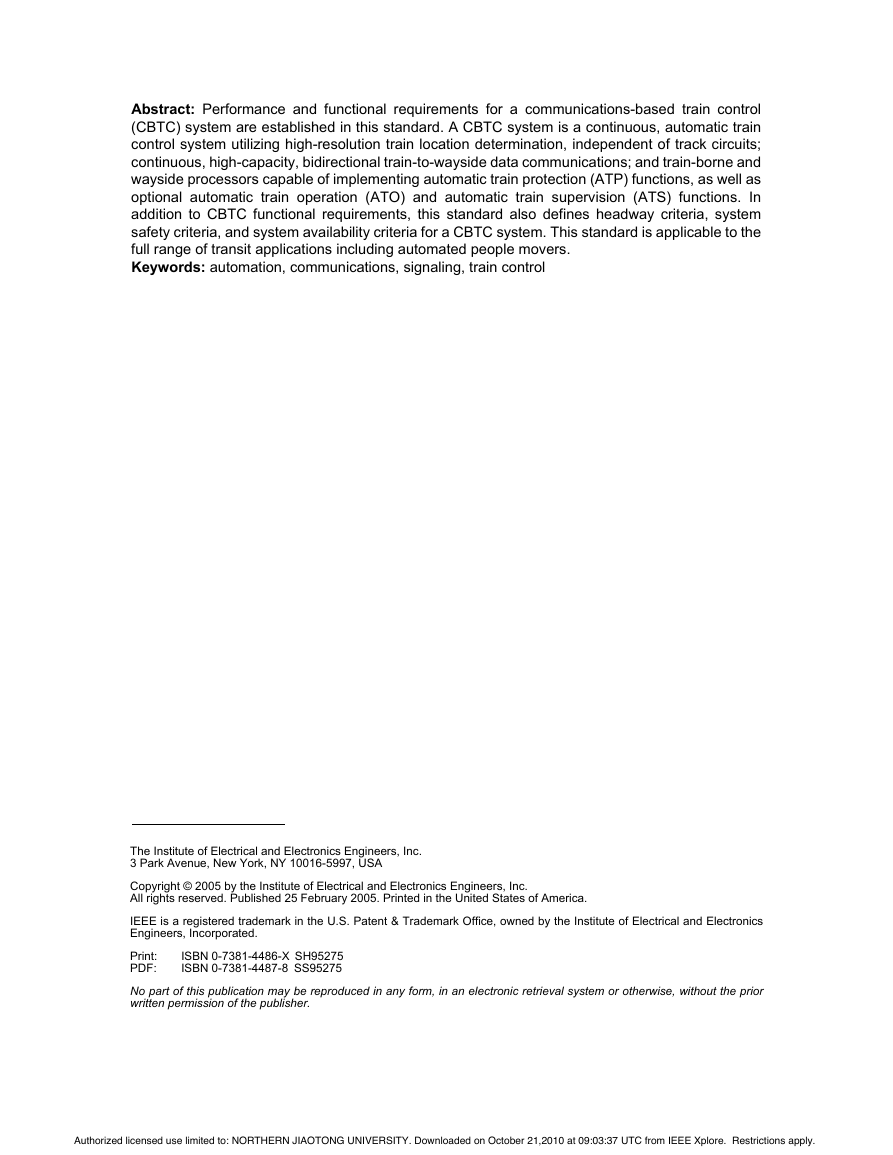
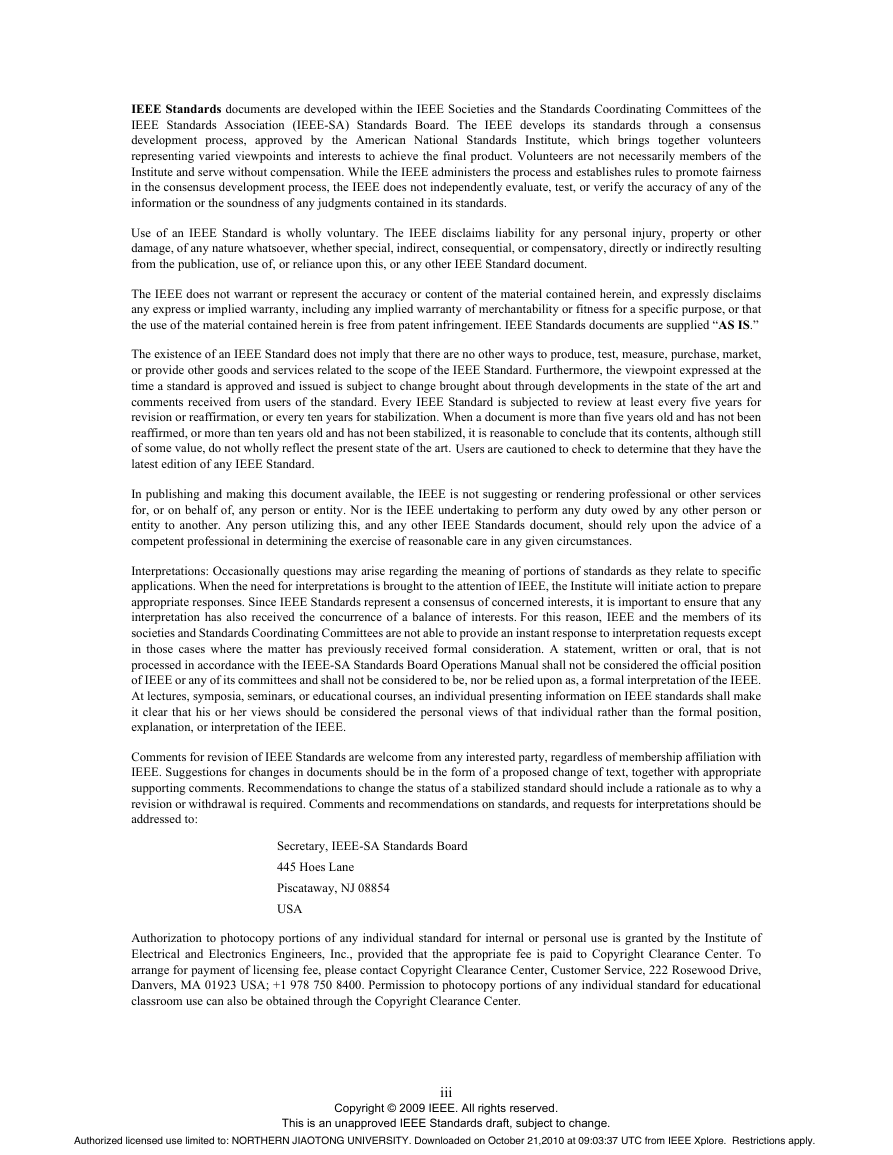
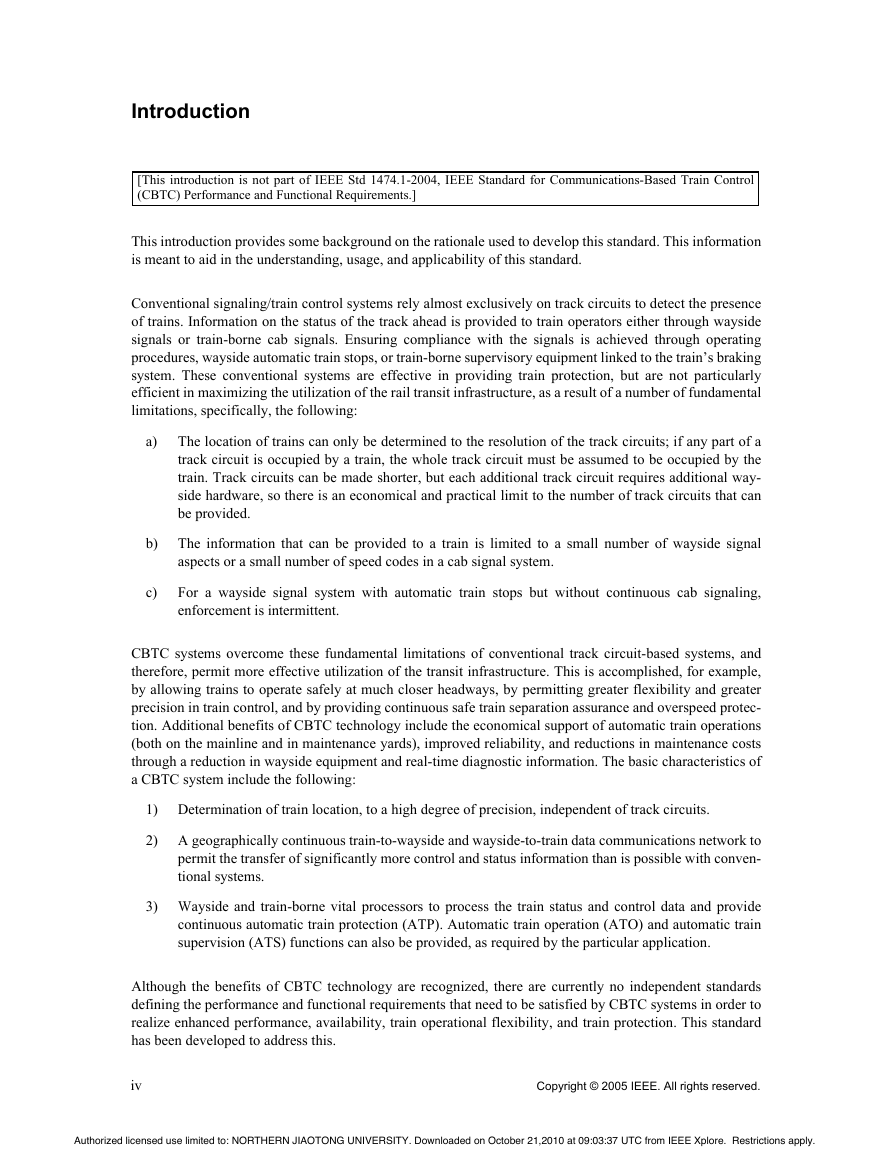
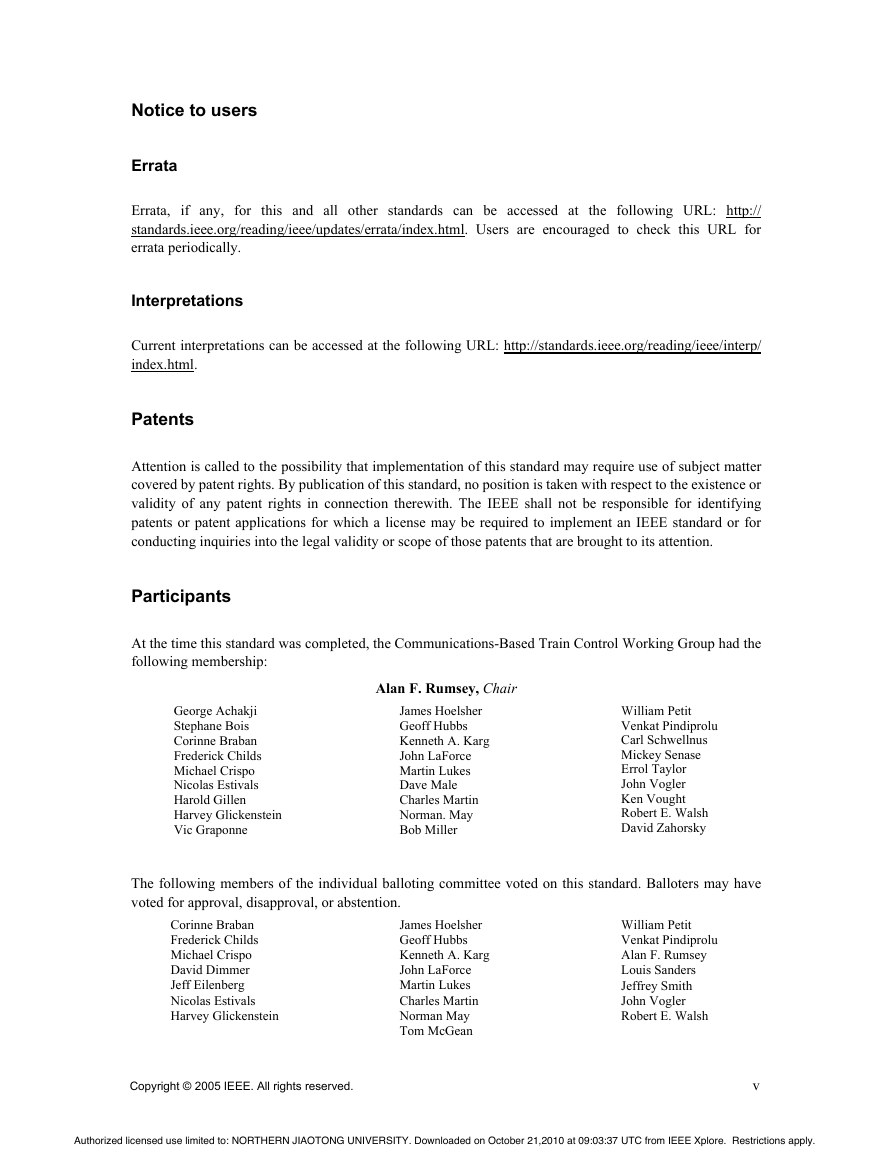









 2023年江西萍乡中考道德与法治真题及答案.doc
2023年江西萍乡中考道德与法治真题及答案.doc 2012年重庆南川中考生物真题及答案.doc
2012年重庆南川中考生物真题及答案.doc 2013年江西师范大学地理学综合及文艺理论基础考研真题.doc
2013年江西师范大学地理学综合及文艺理论基础考研真题.doc 2020年四川甘孜小升初语文真题及答案I卷.doc
2020年四川甘孜小升初语文真题及答案I卷.doc 2020年注册岩土工程师专业基础考试真题及答案.doc
2020年注册岩土工程师专业基础考试真题及答案.doc 2023-2024学年福建省厦门市九年级上学期数学月考试题及答案.doc
2023-2024学年福建省厦门市九年级上学期数学月考试题及答案.doc 2021-2022学年辽宁省沈阳市大东区九年级上学期语文期末试题及答案.doc
2021-2022学年辽宁省沈阳市大东区九年级上学期语文期末试题及答案.doc 2022-2023学年北京东城区初三第一学期物理期末试卷及答案.doc
2022-2023学年北京东城区初三第一学期物理期末试卷及答案.doc 2018上半年江西教师资格初中地理学科知识与教学能力真题及答案.doc
2018上半年江西教师资格初中地理学科知识与教学能力真题及答案.doc 2012年河北国家公务员申论考试真题及答案-省级.doc
2012年河北国家公务员申论考试真题及答案-省级.doc 2020-2021学年江苏省扬州市江都区邵樊片九年级上学期数学第一次质量检测试题及答案.doc
2020-2021学年江苏省扬州市江都区邵樊片九年级上学期数学第一次质量检测试题及答案.doc 2022下半年黑龙江教师资格证中学综合素质真题及答案.doc
2022下半年黑龙江教师资格证中学综合素质真题及答案.doc